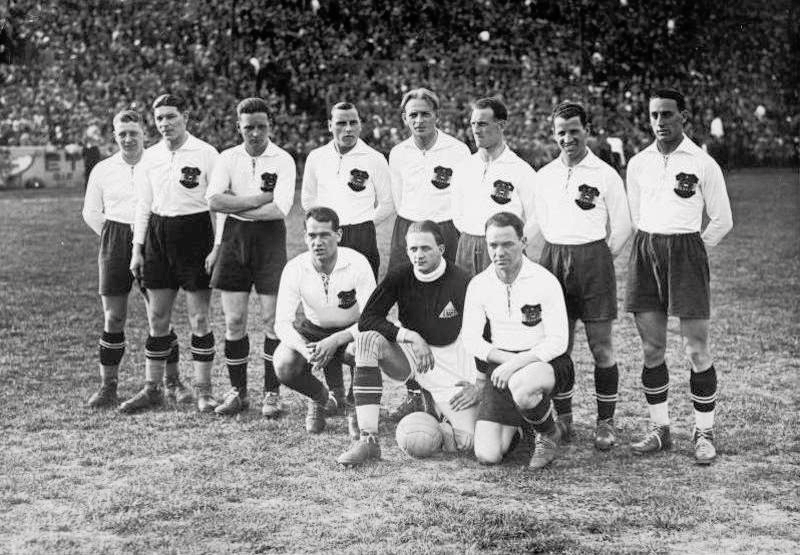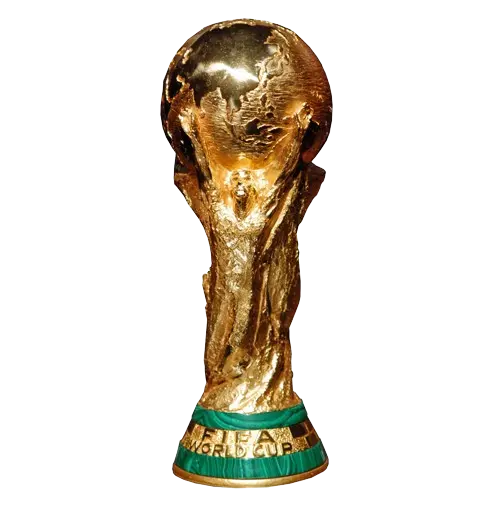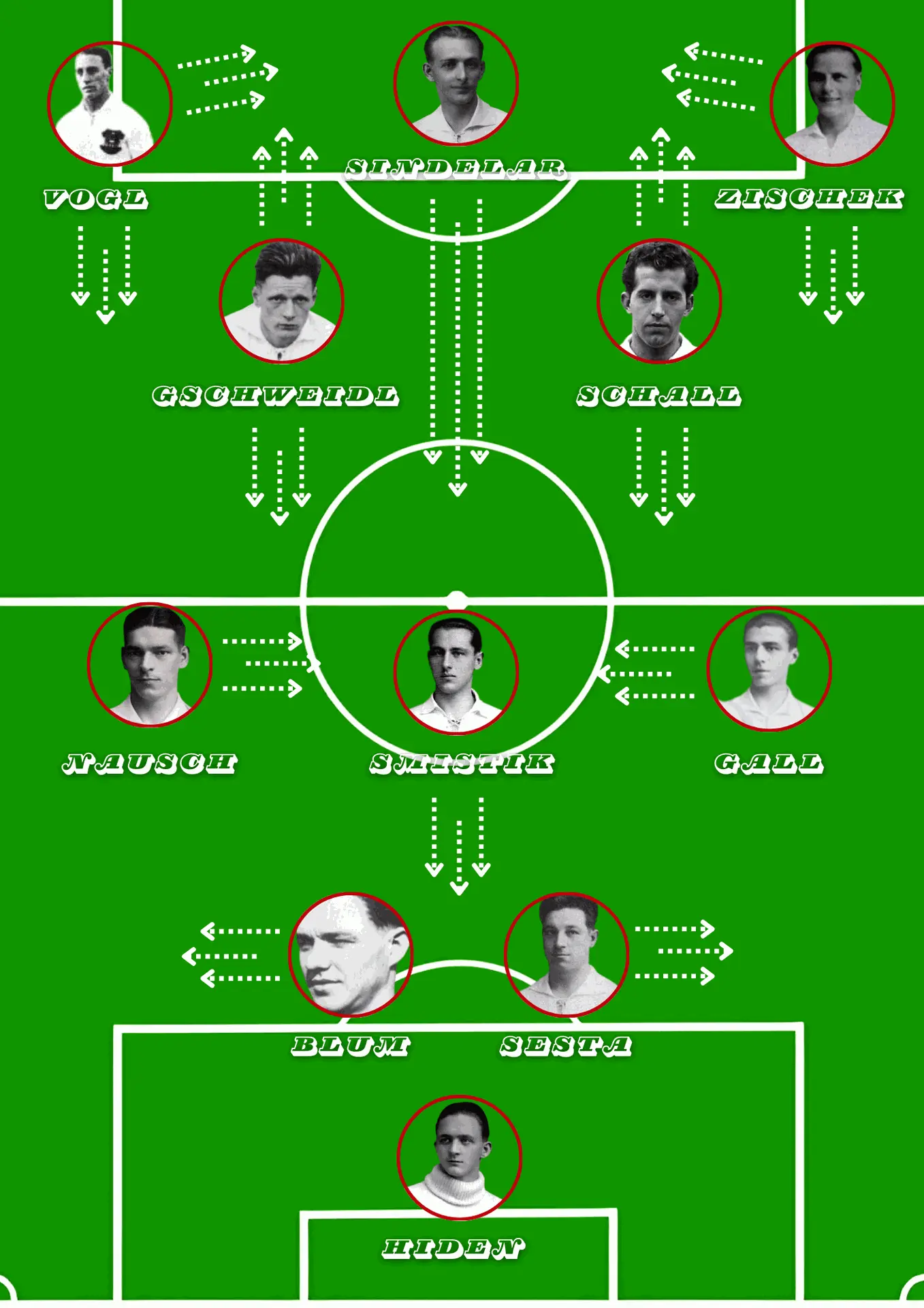A team of football geniuses
One of the finest teams without a major trophy
The Golden Age of the Austrian national team dates back to the late 1920s and early 1930s. During this period, Austria was one of the best football countries.

One-man team: Hugo Meisl
It was truly at the beginning of the 1930s that Austria was led by a legendary coach: Hugo Meisl. The latter is probably the best Austrian coach in history. He will be the coach of the team twice (between 1912 and 1914 then between 1919 and 1937. His record will be more than satisfying with 131 matches, 70 victories, 30 draws and 31 defeats.
The year 1931 was the beginning of the prime of this Austrian team. With players such as Rudi Hiden, one of the best goalkeepers of the era; Josef Blum, an excellent defender; Josef Smistik, one of the best defensive midfielders in history; and an attack composed of Fritz Gschweidl, an inside-right genius; Anton Schall, a formidable finisher and the team's playing master and greatest legend in Austrian history Mathias Sindelar.
During this year 1931, the team played friendly matches and also the 1931-1932 International Cup. This is a tournament between teams from five nations: Austria, Hungary, Italy, Switzerland and Czechoslovakia. The competition took place from February 1931 to October 1932.
With a 2-3-2-3 composition, Austria, like many teams of this era, play an attacking game. But unlike teams who stupidly sent the ball into the opposing camp, the Austrian team could play intelligently thanks to its exceptional players.
Perfectly suited to the Austrians' offensive play, this playing pattern allowed Meisl to align five offensive elements, Schall, Zischek, Gshweild, Vogl and Sindelar being among the best attackers of the time. Anton Schall is one of the best strikers of his time, with the Austrian national team, he scored 26 goals in 27 caps. Despite his young age, 24 years old in 1931, he gradually lost influence in the game and was replaced by the young Josef Bican during the 1934 World Cup. Henri Hiltl, 20 years old in 1931, was one if is the greatest hope of Austrian football at the time, but his departure for Excelsior AC Roubaix in 1934 will definitively put an end to his role as a substitute in the Austrian team where he will only play one only once with. Josef Smistik, 25 years old in 1931, is an experienced center half who is very athletic at his height of 1.83 meters, he is both the recovery midfielder and the first receiver of the team.
In defense, the players are aging with Josef Blum, 33 years old in 1931, who will gradually give up his place. After him, we find players like Karl Sesta (who arrived in 1932 with the aim of replacing Blum) and Karl Rainer. Rudi Hiden, the goalkeeper, is a player who was launched for the selection at just 20 years old and who is blessed with extraordinary reflexes. In addition, he is a very good kicking player, and the first player to create moments of ball possession, possession which is the team's philosophy.
The Austrians selected are outstanding ball players, one of the first characteristics that stands out to spectators is the repetition of passes to the feet, something quite exceptional at the time. This style of play, a distant ancestor of tiki-taka, is largely based on one man: Matthias Sindelar. He is the man who is often at the conclusion of actions but also at their initiatives. With his height of 75 meters and a frail physique he does not seem impressive at first glance, but his technical quality makes him the idol of an entire people. He is one of the best dribblers of his era and for some the best player of his time. He tends to zone out, dribble, score or even deliver assists in a period where individual marking is essential.
The fact that Sindelar constantly drops means that the inside-left or inside-right (Schall and Gschweidl) as well as the wingers have more space to gain depth. In short, the Austrian team stands out from the others with perpetual movement and an ultra-effective ability to stand out against defenders who are often better in duels than in reading the game.
A very nice team
In 1931, Austria began its International Cup against Italy, Austria lost 2-1 with goals from Giuseppe Meazza and Raimundo Orsi. This defeat will be the only one of the year for the Austrian team which makes up for it in the following match against Czechoslovakia 2-1 (goals from Walter Nausch and Johann Horvath) with a secondary team. Sindelar, Gschweidl or even Schall not being present.
In the next match, Austria faced their rival team, Hungary and the match ended in a dull 0-0. The following friendly matches will be there to revive the team: 5-0 victory against Scotland then 6-0 against West Germany.
For its return to the International Cup, Austria faced Switzerland and won the match 2-0 (goals from Fritz Gschweidl and Anton Schall). Then a new friendly match will take place, again against West Germany who are once again humiliated 5-0, hat-trick from a sparkling Mathias Sindelar.
For the return match against Hungary, the match once again ended in a draw and a 2-2. Karl Zischek having signed a double. The last match of the year is against Switzerland, who are the weakest team in the competition, and this will show on the pitch. The Austrian team confiscates the ball from the Swiss players and proceeds offensively: final score 8-1, hat-trick from Anton Schall and double from Fritz Gschweidl. Rudi Hiden played 7 matches that year for 3 clean sheets and 6 goals conceded. Huge statistics for the era and his offensive game.
One of the greatest national teams in history
The year 1932 was that of confirmation, Josef Blum, who was getting older, moved to the bench, Karl Sesta replaced him and won. Josef Simstik plays less, to leave playing time for other midfielders to play in the 1934 World Cup which is approaching. Leopold Hofmann, Karl Gall, Leopold Drucker, Georg Braun, Johann Horvath, Hans Mock, Heinrich Müller and Walter Nausch share the matches in midfield.
Fritz Gschweidl is less decisive, but Anton Schall and Matthias Sindelar are decisive and carry this team. Austria first took revenge on Italy, winning the second leg 2-1 with a double from Matthias Sindelar. The following match will be one of the best for this Austrian team, an 8-2 victory against Hungary (hat-trick from Matthias Sindelar, Anton Schall scores a quadruple). After a 1–1 draw against Czechoslovakia, Austria played a friendly against Sweden, winning 4–3, before facing Hungary again, who they beat 3–2. Austria won the 1931-32 International Cup with 11 points, 4 wins, 3 draws and 1 small defeat, they scored 19 goals and conceded 9 in the competition. They won this title, 2 points ahead of Italy who won the 1934 World Cup with almost the same team.
The last two matches of the year are against England, among the English, where the local press which has never lost on its territory is arrogant, we expect a large score, 3 or 4-0 for the English. But Austria, facing what is considered by many to be the best team in Europe, will impress the English public. The match was decided in the final moments of the match: 1-1 in the 76th minute. But the final score will be 4-3 for England, a success for Austria who will have scared the English with their fast and free play. Subsequently, Austria plays Belgium which they crush with a score of 6-1, Anton Schall signs a new quadruple.
Austria and Hungary as the strongest teams in the world
In 1933, Austria will prepare with friendly matches for the 1934 World Cup. At the same time, they fall into a qualifying group made up of Austria, Hungary and Bulgaria and which will take place in 1934. At the time, this was the strongest qualifying group with Austria and Hungary being among the best teams in the world.
Rudi Hiden, who joined RC Paris, left the national team, a big loss for the team, he was replaced by Peter Platzer who was then 23 years old. A small 19-year-old player who is making a big splash at Rapid Vienna joins the selection, Josef Bican, his 1m90 and 22-year-old teammate Franz Binder also joins the national team. This team trusts youth.
Austria begins its year with a meeting against the French team. This match will be considered one of the team's finest as they dominated their opponents, winning 4-0 with 4 different scorers. The next match was a 2-1 defeat against Czechoslovakia, before making up 1-1 against Hungary, 4-1 against Belgium, 3-3 against Czechoslovakia, 2-2 against Austria, 2-2 against Scotland and finally a 1-0 victory against the Netherlands.
Great disappointments for a golden generation
At the 1934 World Cup, Austria had a good first performance against France, winning the match 3-2 after extra time. Then the club will confirm against Hungary by winning the match 2-1. In the semi-final, the club lost its match against Italy, it was a real disappointment, the disappointed players also lost the match in the small final 3-2 against the German team which was the standard of propaganda of the Nazi regime.
In 1935, Austria suffered another failure, since after their 2-0 defeat and their two draws against Czechoslovakia 0-0 and Hungary 4-4, Austria was overtaken in the ranking of the 1933 International Cup -35 and finished second with 9 points, behind Italy's 11.
Austria also lost 6-3 against Hungary in a friendly match and Poland 1-0, but still won only one match on the year 5-2 against Poland in the first leg. This is Austria's worst prime season. Something that is understandable because the country is suffering from the Anschluss which seems to be coming. Indeed, there will have been a failed coup d'état by the country's Nazis. Other political events took place, which can explain the poor sporting results of players from a country in full doubt and fear.
In 1936, Austria experienced another failure, yet the team started its year well with a great 5-4 success against Spain in Madrid (Franz Binder and Josef Bican scored). Then a 3-2 victory against Portugal in Porto (Binder and Bican score again). Austria draws 1-1 against Czechoslovakia, then loses 5-3 against Hungary despite a double from Bican. Then will offer one of the greatest successes in its history, a 2-1 victory against England, Rudolf Viertl and Rudolf Geiter are the Austrian scorers.
At the same time, a non-professional Austrian team (without its best players) participated in the 1936 Olympic Games and reached the final, which it lost 2-1 after extra time against Italy.
A tragic end and the destruction of a country
The aging Austrian team continued to have flashes of genius but suffered from a slow defense and especially the death of Hugo Meisl from a heart attack in 1937. Austrian football was the widower of the man who established professionalism in Austria and created the Mitropa Cup. Subsequently, the Nazi regime abolished the Austrian championship to make it a German regional championship. Some players against the Nazi regime mysteriously disappear or are found dead, like the greatest legend of Austrian football who never wanted to wear the swastika Matthias Sindelar.
For eight months, Matthias Sindelar lived in hiding with his Italian Jewish partner Camilla Castagnola, both hunted by the Nazis. The Gestapo lists him and his friends as “Jewish, Czech and social-democrat sympathizers”. On January 23, 1939, his lifeless body was found with that of his mistress, naked on their bed in his apartment in Vienna. Officially, the autopsy report sent concluded that it was an accidental death from carbon monoxide poisoning due to a defective chimney. Different theses evoke a suicide or political murder organized by the Gestapo for its support for pro-Jewish social-democratic nationalism. A police investigation was carried out within two days, but the report disappeared during the Second World War and the bodies were cremated. More than 30,000 people accompanied the remains of Matthias Sindelar through the streets of Vienna on the day of his funeral.
Trophies :
International Cup x1
- 1931-32
Vice-Champion International Cup x1
- 1933-35

4th at World Cup x1
- 1934
